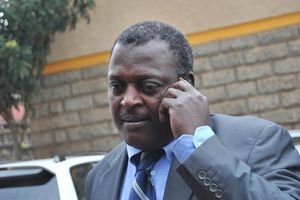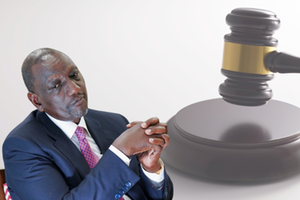Premium
KMPDU calls off doctors’ strike after Uhuru intervenes
Doctors handed long-suffering Kenyans a Christmas gift as they signed a return-to-work formula with the Ministry of Health, even as the government’s failure to reach a deal with other cadres of medical workers remained a blot on the sagging public healthcare system.
Health Cabinet Secretary Mutahi Kagwe signed an agreement with the Kenya Medical Practitioners, Pharmacists and Dentists Union (KMPDU), whose details remained scanty, but nurses and clinical officers, who form the bulk of critical medical workers, remain on strike with no deal yet on the table.
“The issues we are discussing today is beyond the doctors’ issues and the Ministry of Health is happy to discuss with the Ministry of Labour, we will mediate in that process to ensure that all Kenyans are happy,” said CS Kagwe.
KMPDU acting secretary-general Chibanzi Mwachonda said President Uhuru Kenyatta had intervened in the resolution of their grievances, hence the end of the strike.
In the return-to-work formula, doctors have negotiated for Treasury to fast-track funding budgetary allocations to enable counties to procure comprehensive group life, last expense, enhanced work injury benefits and group personal accident insurance cover.
Consultation
They have also resolved that consultation between the Health ministry, the Salaries and Remuneration Commission (SRC) and the National Treasury continue to allow payment of call allowance arrears owed to doctors.
As per the 2017 return-to-work formula, doctors negotiated for an additional emergency call allowances (now renamed doctors’ allowance). Medical officer interns were to receive an additional Sh36,000 per month, adding up to Sh66,000 per month.
Medical officers, senior medical officers and medical specialists II were to receive an additional Sh42,000 per month, raising the total sum payable to Sh72,000 per month.
Medical specialists I, senior medical specialist, chief medical specialist II and chief medical specialist I were to receive an additional Sh50,000 per month, making the total sum payable Sh80,000 per month.
Doctors also negotiated to have 116 doctors who are on contract recruited subject to availability of funds and the unconditional release of all withheld salaries arising from their industrial action.
They also reached an agreement that all health workers in public hospitals would be provided with personal protective equipment (PPE) and an assurance that those who went on strike would not be victimised.
Consultation
The issue of victimisation came after several counties advertised and threatened to fire medics who were on strike. It is still not clear whether the same gesture would be extended to nurses and clinical officers who are still on strike.
The Cabinet Secretary also promised to mediate over the firing of health workers in Laikipia and Kirinyaga counties. The medical workers were fired after going on strike last year.
Before KMPDU members went on strike, SRC had dismissed the health workers’ push for an enhanced risk allowance, siding with governors who had termed the demand for increased perks as unaffordable.
“As provided for in the revised guidelines on collective bargaining in the public service, affordability is one of the key considerations by the commission when determining parameters for collective bargaining negotiations. County governments have indicated unavailability of resources to cater for the resultant review of the CBA item as proposed by the trade unions,” SRC chairperson Lyn Mengich said in a letter to the CoG dated December 10.
Currently, doctors are earning a Sh20,000 risk allowance per month, nurses Sh3,850 per month, Sh3,000 for the clinical officers and Sh2,000 for the other officers. SRC wants these rates maintained.
Striking clinical officers and nurses wanted their rates increased to Sh30,000 per month.





